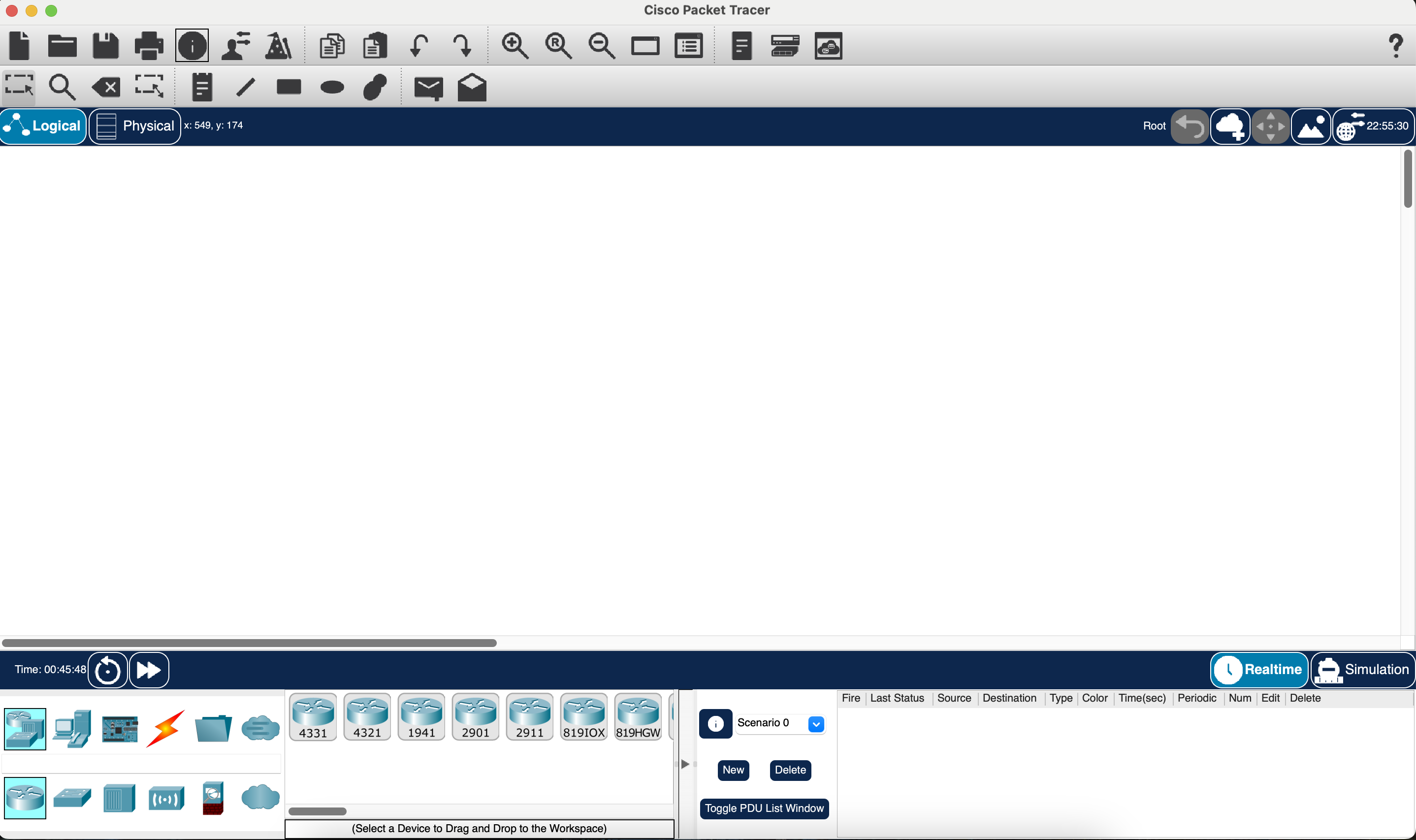Contents of this article
In this article, I describe about Cisco Packet Tracer which is a product of Cisco. Cisco Packet Tracer is a powerful network simulation tool developed by Cisco Systems. It is widely used for educational and training purposes to teach students, networking professionals, and enthusiasts about various aspects of computer networks. Packet Tracer allows users to create, configure, and troubleshoot network environments in a virtual setting, providing a safe and controlled environment for learning without the need for physical hardware.
Overview and Purpose:
Cisco Packet Tracer serves as a comprehensive, user-friendly platform for simulating networks. Its primary purpose is to facilitate learning and understanding of networking concepts, protocols, and configurations. It is commonly used in educational institutions, especially in networking courses, to provide hands-on experience in designing, implementing, and managing networks.
Key Features:
Device Simulation:
- Packet Tracer supports a wide range of Cisco devices, including routers, switches, hubs, firewalls, and end devices such as PCs and servers.
- Users can drag and drop these devices onto the virtual workspace and interconnect them to create complex network topologies.
Topology Creation:
- Users can design and create network topologies by connecting devices and configuring their settings.
- This feature allows users to experiment with different network designs and understand the implications of various configurations.
Configuration and Command Line Interface (CLI):
- Devices in Packet Tracer can be configured through a graphical user interface (GUI) or a command line interface (CLI).
- The CLI functionality allows users to input commands similar to those used in real Cisco devices, enhancing their command-line skills.
Protocols and Technologies:
- Packet Tracer supports a variety of networking protocols and technologies, including routing protocols (e.g., RIP, OSPF), switching technologies, VLANs, DHCP, DNS, NAT, and more.
- This enables users to simulate real-world scenarios and understand the behavior of different protocols in a controlled environment.
Real-time Simulation:
- The real-time simulation feature allows users to see the effects of their configurations immediately.
- Changes in configurations, network traffic, and device status are reflected in real-time, providing instant feedback.
Multilayer Switching:
- Packet Tracer supports multilayer switching, allowing users to configure layer 3 routing on switches and simulate complex network architectures.
Packet Capture and Analysis:
- Users can capture and analyze network traffic within Packet Tracer, aiding in the understanding of how data flows through the network.
- This feature is valuable for troubleshooting and learning about packet-level details.
Assessment and Activity Wizard:
- The Assessment mode and Activity Wizard enable the creation of interactive learning activities and assessments.
- Instructors can design custom activities to assess students’ understanding of networking concepts.
IoT Integration:
- Packet Tracer includes support for Internet of Things (IoT) devices, allowing users to simulate IoT scenarios and understand the integration of IoT in networking.
Educational Significance:
Cisco Packet Tracer plays a crucial role in networking education, offering several benefits:
Hands-On Learning:
- Provides a safe and risk-free environment for users to experiment with network configurations and troubleshoot issues.
- Allows users to gain practical, hands-on experience, which is essential for understanding networking concepts.
Cost-Efficient Training:
- Eliminates the need for expensive physical hardware, making it an affordable option for educational institutions with budget constraints.
- Enables learning institutions to set up virtual labs that can accommodate a large number of students simultaneously.
Scenario-Based Learning:
- Supports the creation of realistic scenarios, helping users understand how network configurations impact overall performance.
- Enables the simulation of diverse network environments, preparing users for real-world networking challenges.
Collaborative Learning:
- Facilitates collaborative learning by allowing users to share Packet Tracer projects and work on network simulations together.
- Enhances teamwork and communication skills among students.
Curriculum Integration:
- Aligned with Cisco’s Networking Academy curriculum, Packet Tracer seamlessly integrates into educational programs.
- Supports a structured approach to learning, covering fundamental to advanced networking concepts.
Instructor Tools:
- Equips instructors with tools to create and customize learning materials, assessments, and activities.
- Provides real-time monitoring capabilities, allowing instructors to track students’ progress and offer targeted assistance.

Industry Relevance:
Apart from its educational applications, Cisco Packet Tracer also serves professionals and network enthusiasts in the following ways:
Certification Preparation:
- A valuable tool for individuals preparing for Cisco certifications (CCNA, CCNP) by offering a platform to practice and reinforce theoretical knowledge.
Prototyping and Testing:
- Professionals can use Packet Tracer to prototype and test network configurations before implementing them in a production environment.
- Reduces the risk of errors and downtime associated with changes to network infrastructure.
Continuous Learning:
- Provides a platform for ongoing learning and skill development in the rapidly evolving field of networking.
- Professionals can experiment with new technologies and stay abreast of industry trends.
Remote Access Solutions:
- Offers a means for professionals to remotely access and configure networks, making it a valuable tool for remote troubleshooting and management.
Conclusion for Cisco Packet Tracer:
In summary, Cisco Packet Tracer is a versatile and powerful network simulation tool with a rich set of features designed to support learning, training, and experimentation in the field of networking. Its ability to emulate various networking devices, protocols, and scenarios makes it an invaluable resource for both educational institutions and professionals seeking to enhance their networking skills. By providing a dynamic and interactive learning environment, Cisco Packet Tracer continues to play a significant role in shaping the next generation of networking professionals. I hope you found this article helpful in terms of networking. You may contact us or drop a comment below for any queries or suggestions about the contents of this website.






